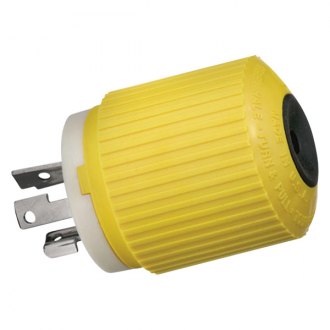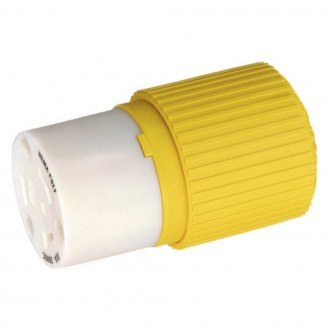Boat Electrical

Featured Products
-
 $747.42 - $1,441.85
$747.42 - $1,441.85 -
 $25.91 - $150.79
$25.91 - $150.79 -
 $44.99 - $60.52
$44.99 - $60.52 -
 $6.82 - $273.43
$6.82 - $273.43 -
 $20.08 - $29.08
$20.08 - $29.08 -
 $67.80 - $100.73
$67.80 - $100.73 -

-

-
 $654.15 - $1,993.47
$654.15 - $1,993.47 -
 $99.37 - $118.72
$99.37 - $118.72
Most of the modern powerboats and sailboats use electrics to start the engine or power numerous systems, navigation equipment, lighting, etc. There is a great variety of electrical wiring schemes that depend on the type of vessel and application, and for a newcomer, most of them look quite daunting. However, there are a couple of common principles incorporating many marine wiring designs, and understanding these principles can make such places as the back of a switchboard not as scary. Let's begin with a battery, a device that stores electrical energy. Many boats use one starting battery to crank the engine and one or several deep cycle batteries (AGM, gel, Li-Ion, etc.) to power everything else.
While the starting battery should have sufficiently high cranking amps, the others feature a greater ability to withstand deep discharges and can be divided into several banks. All of them are charged by the alternator or auxiliary battery charger that uses shore power, and you can activate different batteries with the help of the main battery switch. Actually, each and every one of them can be isolated from electrical consumers, although there is one device that normally stays always connected no matter what: a bilge pump. The reason is quite obvious: a dead battery is better than a swamped boat.
In order to control numerous onboard systems, the energy from deep cycle batteries (positive) goes via the switch panel or similar assembly, yet the main battery negative normally goes to a negative bus bar that also collects the negatives of other systems. It's highly recommended to use marine-grade primary wire for such connections. Even if compared to SAE-approved automotive wires featuring enhanced isolation, their marine counterparts are more advanced: for a given gauge size, they are somewhat larger and have improved, tinned stranding for better flexibility and resistance to corrosion and vibration.
Their isolation is also enhanced; resistant to heat and chemicals, it's meant to serve long in the harsh marine environment. On our virtual shelves, you will find a large assortment of boat electrical parts including different types of batteries, power converters and inverters, wires, solar panels, switches and switch panels, relays, adapters, connectors, and so on. Whatever system you're going to install, repair, or upgrade, be it a trolling motor, autopilot, extra lights, a livewell pump, etc., consider our online store as your reliable source for all the necessary equipment. Crafted by reliable companies with serious experience in this field, our products meet the highest industry standards.
Particularly, our large assortment of autopilots includes both relatively simple tiller cockpit models utilized on small boats and much more complex inboard autopilots able to interact with a chartplotter or other electronics. As for a battery charger, you can choose a device that automatically charges one or several battery banks and is suitable for all the existing battery types, or an alternative solution like an inverter-charger that not only charges but also provides you with a source of AC current to power household appliances or tools. Meanwhile, whatever you select, always be mindful of safety and remember that every circuit on the boat should be protected with a corresponding fuse or circuit breaker.









































